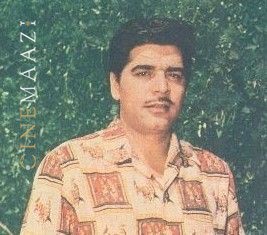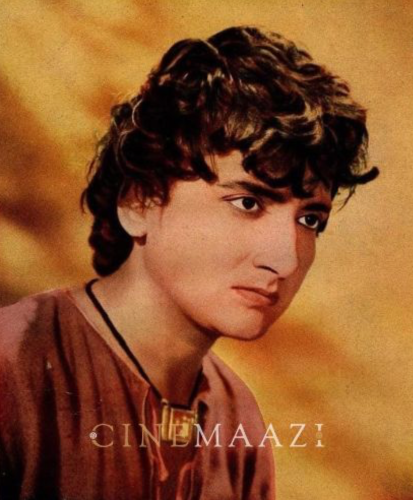Film Journalism Down the Ages
Film Journalism began in 1935 - when I started filmindia. Not before that. There was some paper in Calcutta, but it was not selling. I took criticism as my main selling point. That was the best feature of Filmindia. And the Editor's Mail. Still it is the best.
Among foreign journals, there was Photoplay. Not many readers - it was expensive. S.K. Vasagam also had an Indian magazine called Photoplay. And there was also B.R. Chopra. He had a magazine in Lahore before Independence. I can't remember its name. And yes, Bodhraj Oberoi had a magazine called Cinema. There was another called Movies... But they all followed me. They used to come here periodically and blackmail me...!
Adverse Criticism
I was attacked many times. But I just faced it with my muscle - nothing else. I was a very muscular man, I was an athlete, a tall fellow - and there were quite a few people who were afraid of me physically, Besides, most of them were Gujaratis and they would not like physical fights.
There was probably only one man who liked film criticism and sometimes also quarreled with me about it - that was Vasan of Gemini. A great gentleman. Also Mehboob Khan. They may have had an ad on the cover and a bad review inside, but both were great friends of mine.
That man Chandulal Shah tried to boycott my paper every month from 1935, onwards. But the producers, like the present politicians, were never united! So they only passed resolutions! He had had gone round everywhere trying to stop advertisements. Nevertheless, I had a lot of advertisements in the '30s. But a stage came when they were worth nothing. Producers owed me seven lakhs of rupees for these advertisement. More than that probably. They don't pay. And all my blessed producers ran away to Pakistan with the money. I couldn't demand money in advance. The only ones who paid in time were Vasan of Gemini, and Chandulal Shah - when he gave ads - Sagar Film Company-about half a dozen of them.
Filmindia was the only paper that counted in those days. Distributors would not take delivery of the prints after reading my reviews. But it never affected the seeing public. The box-office was never affected. Only the Government servants, who had a limited budget, who wanted to pick and choose - the intellectual middle-class would read Filmindia and then see the movies. Otherwise, the masses don't care for any review in any language.
Career in Films
I was working in Agfa Photo Company as a technical man and a salesman. That was in 1928. Then I was given an opportunity to direct a movie, because I was a critic all the time - Cinema Samachar was going on, Maharashtra Film Company asked me to direct a film called ‘Kismet' in 1929. That was the last silent movie of the company, after which it folded up. There was a foreign lady in it, a Hungarian called Sunita Khan. Sometime in 1931, I started producing my own feature films. One of them was directed by Nanasaheb Sarpotdar and that boy from Pakistan, now a music director - Rafiq Ghaznavi - played the lead. Then I started my own company called Ghandharva Cinetone, sometime in 1932. I wrote, produced and directed four 'talkies' and often gave the music myself. Mubarak and Padma Devi played in my films.
I had a partner at that time - Khubchandbhai - he was a Silver King. He gambled. I was in Ellora, shooting. When I came back I found the whole place locked up. He had gone into liquidation because of satta. But he was a very good man. Somehow, I had to pay all my debts. In 1935, I became insolvent. The people whom I had called my 'friends' were the first ones to go to court against me. I owed 72,000 rupees. I had no money to pay. After one and a half years, the Government gave 18,000 rupees as settlement.
Then I went and earned more money and paid the entire Rs. 72,000-with interest. And one girl - by that time she had promoted herself to Foras Road and become a regular one - Shireen Bano, stirred my emotions. I owed her about 2,000 rupees. I had to trace her. So I went to Foras Road. She was quite surprised! She thought I was interested in her - in that way. She absolutely wept. She wouldn't let me go out of the house until I had eaten something sweet.... in this way I paid off all my money.
I earned my money through filmindia. I also used to do publicity work for film producers. Sagar Film Company paid me Rs. 30, Krishna Film Co. 400, Saroj, 300 - about 1, 500 rupees I used to earn per month during my so-called insolvency. I was the first publicity man in the film industry! I was the man who wrote 'Kissable Mischief of the Year!' Bulbulbhai of Sagar has mentioned it. Chimanbhai Desai, his father was quite afraid about how the picture would run. So I took half a page in The Times of India, and kept all the sides black. In the middle, I wrote 'The Most Kissable Mischief of the year - Maya Bannerji in 'Jagirdar', directed by Mehboob Khan! And the picture ran!"
Six Bottles of Beer
But the second half share, which I purchased, in 1948, cost me Rs. 1,40,000!
Our circulation was about 20 to 25,000 when I purchased my first half share. When I took it over wholly, it was about 60,000. The circulation would go up for Diwali and special numbers. We had 2000 agents all over the country, who got 30 percent commission.
Switch To "Mother India"
I have a smaller circulation for Mother India. But I am influencing politics enough. The people who count read Mother India - like Indira Gandhi. In July 1975, less than a month after the Emergency and Press Censorship were simultaneously declared, I was arrested and imprisoned. I was released eight days later after my wife persuaded me to sign an undertaking that I would not write anything against the Government.
Golden Age Of Films
The best were the movies produced by B. N. Sircar. Shantaram's were slightly crude but B. N. Sircar's films were very fine. Shantaram's themes were social, but most of his work was done by us which he won't admit today. Anyway, Shantaram always had this view - social purpose of the movies - always. Even today. Shantaram is a very hard-working man but his technique has become old now.

Back Row (extreme left) Shobhana Samarth (extreme right) Sulochana, Baburao Patel and Jairaj
Bombay Talkies' films were quite good - not great. Not on par with the films of New Theatres. They all cashed in on Devika Rani. A very sweet person. She was not a great actress, but she was very beautiful and could project a personality. My wife was particularly fond of her. She was very popular with the masses despite her anglicised Hindi and her straight line music. Ashok Kumar was a much better actor.
There was a demand for better films in the '30s and '40s. Even the stunt films were very popular. Master Vithal was very popular, Nadia's films. Wadia Movietone's productions - there was no crime in them. There was nothing anti-social there. A lot of chivalry, bravery, no unpleasantness.
The first anti-social picture was 'Kismet', produced by Bombay Talkies. And I slashed it. The more I slashed it, the more it ran. It was one of the biggest box-office bonanzas of its time. That's where the whole trouble began. Abbas and I were against such films.
Nowadays, the journalists go to the key holes. I don't go to them. I never did. Nowadays there's a very low class of producers. Of course there was greater hypocrisy in those days compared to now. A higher class of people were in films because of good business. And sex was the main attraction all the time. At that time the people wore the veil and mask very well-it was a better masquerade than today - I mean, today, these Punjabis are all naked fellows! Another thing now - see how women dress! That time even the prostitute, who came on the screen, was very well dressed, decently dressed. Very coy - knew how to behave. Now, they say 'Hi!'
"I've never hurt anybody...."
The trouble is, I don't mix. I remain away, aloof, always. People think I must be a terrible fellow. But I have not been rude to a single friend yet. I've never seen a film on a complimentary ticket. I have never seen a movie free in my life! Even for Vasan's and Mehboob's films, I bought tickets.
I've never hurt anybody, insulted anybody. Why should I be rude? I don't know why I should get a bad name. They call me a blackmailer, a bounder - I don't know why. Just because they can't reach me, that's all. In the Film Enquiry Committee of 1952, Shantaram called me a blackmailer. Morarji was the Chief Minister. I wrote out a cheque of Rs. 25,000 for anyone who could prove that I was blackmailer. Not one person replied.
Today, I consider myself a dead man. I've lived beyond the age of Sanyas ashram. I don't find life anymore useful. I wish everyone well.
[This is a reproduction of the oriinal published in Fifty Years of Indian Talkies (1931-81)]
Tags
About the Author
Baburao Patel was a film journalist and writer, primarily associated with the two publications Filmindia (1935-1961), which was the first English film periodical published from Bombay and the more politiccally inclined Mother India.







.jpg)


